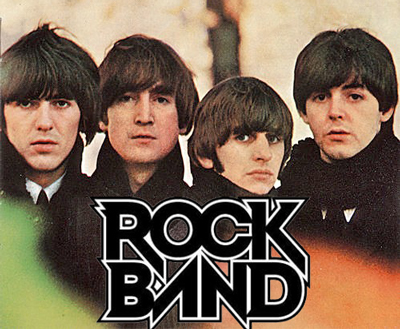CEDAR Retouch™ is used to clean the complete Beatles catalogue and to create the Beatles Rock Band game

16 July 2009
On 30th June, Simon Gibson of Abbey Road Studios and Gordon Reid of CEDAR Audio co-presented a lecture to the IBS (Institute of Broadcast Sound) entitled Audio restoration at Abbey Road Studios and the role of CEDAR Retouch™. In this, they showed how CEDAR has been used to clean the Beatles catalogue, and as a vital component in the creation of the forthcoming Beatles Rock Band game.
Gibson introduced the presentation with a brief history of restoration and remastering at Abbey Road, playing some remarkable vintage recordings from the Abbey Road library including some of Alan Blumlein's earliest experiments into stereophonic sound. He then discussed the current facilities provided by the studio before Reid described the history of digital noise reduction and CEDAR's pivotal role in this field dating back to the inception of concepts such as digital declicking and dehissing at the National Sound Archive twenty-six years ago.
Next, Gibson demonstrated how CEDAR Retouch had been used to eliminate blemishes from the latest remasters of the Beatles catalogue, due for release in September 2009. He demonstrated how he had removed low-level noises from material that had no obvious problems, but which were audibly improved when the 'before' and 'after' tracks were compared.
However, the greatest interest was stirred when Gibson showed how he used CEDAR Retouch to eliminate individual instruments from mixed tracks so that they could be used for the forthcoming Beatles Rock Band game. Hearing Paul McCartney's bass guitar removed from a song without unduly affecting the other instruments and vocals proved to be a revelation, as did examples where Gibson separated drums, handclaps, and other instruments in just seconds.
Gibson concluded by admitting that he had taken Retouch into areas probably unimagined by its designers, and that it had now become an indispensible tool used on almost every project undertaken in the surround mastering and restoration rooms at Abbey Road Studios.
About CEDAR Retouch
CEDAR Retouch 4 is a huge leap forward in sound processing technology. Unlike conventional restoration tools, it provides a wide range of time/frequency editing capabilities, and allows users to define the temporal and spectral content of the sound that they wish to treat. Furthermore, users are not limited to simple 'rectangular' definitions of complex sounds: Retouch 4 allows them to mark complex areas in its spectrogram using the types of tools commonly found in the most powerful photographic and image manipulation software. This makes it possible - accurately and correctly - to identify noises as varied as coughs, squeaky chairs, page turns, the creak of a piano pedal, car horns, and so on. Once identified, unwanted sounds can be eliminated, replaced, moved, copied, or even remixed seamlessly with the surrounding signal. All other audio remains untouched.
For further information:
CEDAR Audio Limited, 20 Home End, Fulbourn, Cambridge, CB21 5BS, United Kingdom.
t: +44 1223 881771
f: +44 1223 881778
e: info@cedaraudio.com
Abbey Road Studios
w: www.abbeyroad.com







